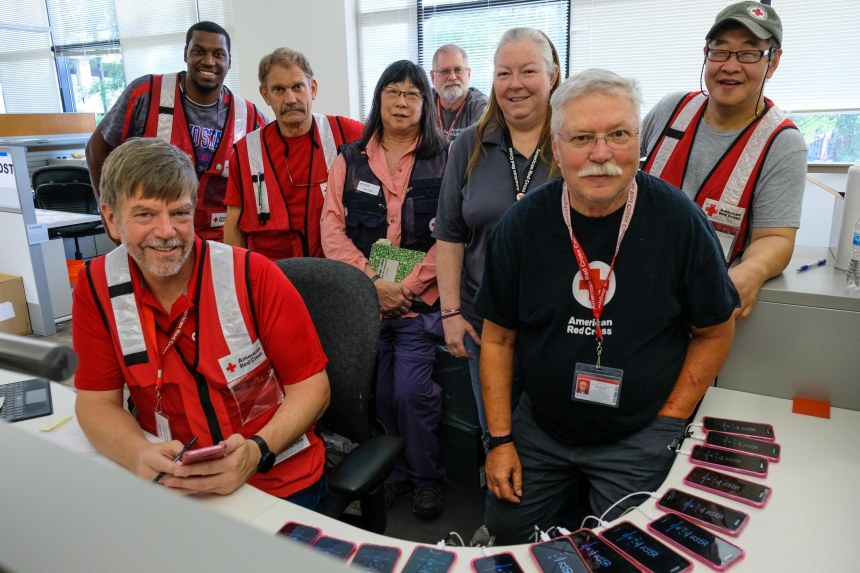Red Cross cell phones: a lifeline for volunteers in the field

Members of the Disaster Service Technology Team at American Red Cross operations headquarters in Durham, N.C.. Sept. 28, 2018
After a disaster, when communications can be affected, a reliable phone is crucial for American Red Cross volunteers working in the field. One of their first stops at a disaster site is therefore the Disaster Service Technology (DST) Department, where their colleagues will provide them with Red Cross cell phones and laptops.
“Our phones are a lifeline to someone who can help volunteers throughout their deployment, whether it’s finding secure accommodation and transportation, locating persons in need of assistance, or reaching a nurse in case they get sick,” says Pam Briggs, who hands newcomers the precious devices upon their arrival.
The Red Cross cell phones, easily identifiable with their bright pink cover, are proving to be valuable companions for volunteers in many ways:
- Maps/GPS: Volunteers come from all over the United States (including Hawaii, Alaska and the Commonwealth of Puerto Rico) as well as from abroad; many are unfamiliar with the area. Maps and GPS are the best way to reach the people in need of assistance, including in remote areas.
- Camera/Video: Volunteers in the field are on the frontline and can capture the faces and voices of those affected by a disaster and can share compelling stories of solidarity as they bring assistance to communities. The phones allow them to share these photographs, videos and stories instantly.
- Hotspot: Wifi can be a rare commodity in the field. Red Cross phones make it easier for volunteers to transmit urgent reports regarding needs, dangers and resources, so that assistance can be safely delivered where it is most needed.
Since American Red Cross operations started following hurricane Florence, the DST team has distributed over 220 telephones and 160 laptops to assist Red Cross volunteers with their work.
“It’s not just their phone that’s important,” said Briggs. “I also enjoy face to face contact. Volunteers are amazed when they come back to the DST Department a few weeks later to hand in their phone, and I still remember their face.”
If you’re interested in learning more about volunteering with the Red Cross, visit redcross.org.
Story by Elena Sartorius/American Red Cross
